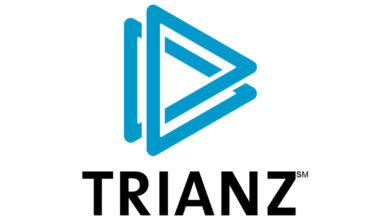SAS Institute debuts its first generative AI assistants, plus tools to help companies build their own

Data analytics company SAS Institute Inc. said today it’s enhancing its SAS Viya artificial intelligence platform with the introduction of new industry-specific generative AI assistants, a new synthetic data generator called SAS Data Maker, and a new developer platform called SAS Viya Workbench.
The company debuted SAS Viya last year, explaining that it’s a kind of AI integration platform that enables organizations to integrate the most powerful large language models, such as OpenAI’s GPT-4 and Google LLC’s Gemini Pro 1.5, into their existing business processes. By doing this, companies can orchestrate those LLMs to create customized AI models and agents that are fine-tuned to accomplish specific business tasks, with explainable results and enhanced privacy and security, ensuring they remain in compliance.
As of today, SAS Viya is being enhanced with a new Viya Copilot offering for developers, data scientists and business users. Available in invitation-only preview, it’s like a personal assistant that’s designed to help users accelerate various business tasks. To do this, it uses a comprehensive toolset encompassing code generation, data cleaning, data exploration and knowledge gap analysis, the company said.
Andy Thurai, vice president and principal analyst at Constellation Research Inc., told SiliconANGLE that Viya Copilot is a useful offering that can help users with multiple tasks and is likely to be particularly useful in knowledge gap analysis and data wrangling tasks. “This could be useful in reducing the need to perform manual tasks where data scientists spend much of their time,” he said.
SAS Viya is also enhancing the company’s flagship marketing platform, SAS Customer Intelligence 360, by building on its existing generative AI capabilities that help with tasks such as marketing planning and customer journey design. With today’s update, marketers can now use generative AI to build recommended audiences based on natural language prompts, suggest email subject lines and extract insights from audience data.
Enhancing AI development
The company is also targeting AI developers, launching a new SAS Data Maker platform that aims to kill two birds with one stone by eliminating privacy concerns and challenges around the scarcity of data. Also available in private preview, SAS Data Maker can generate “high-quality synthetic tabular data” for AI training, meaning customers don’t need to compromise their existing, extremely sensitive data. At the same time, it will help out in situations where companies lack enough data to train AI models that can achieve their performance requirements.
Thurai was less excited about SAS Data Maker, saying the problem is it can only created synthetic data in tabular formats. “The problem is AI needs lots of unstructured data, which is harder to generate, so this may not be of much use to many organizations today,” he said.
Meanwhile, SAS Viya Workbench is a new, dedicated platform for AI development within SAS Viya, providing a self-service, on-demand compute environment for important tasks such as data preparation, exploratory data analysis and building analytical AI models.
With SAS Viya Workbench, developers have the advantage of being able to work in the programming language of their choice, the company said. The platform will launch in the second quarter on Amazon Web Services Inc.’s AWS Marketplace, with support for the SAS and Python programming languages, and will add support for R before the end of the year.
Users can access two development environment options within SAS Viya Workbench, including Visual Studio Code and Jupyter Notebooks. Through these, they take advantage of the company’s powerful analytical tools, native Python application programming interfaces and customizable compute resources to speed up the development of high-performance AI models, the company said.
SAS Senior Vice President of Engineering Jared Peterson said the business case for Viya Workbench is compelling, since customers are under pressure to deliver quick results at lower costs. Therefore, it makes sense to use prebuilt and scalable infrastructures that enable users to focus on creating, innovating, iterating and testing, he said.
“The many challenges developers face aren’t just minor annoyances – they are obstacles that prevent questions from being answered and work from getting done,” Peterson added. “Viya Workbench provides maximum flexibility and results by allowing developers to use their language and IDE of choice, tailor compute power up or down to meet the needs of the project, and ultimately boost their productivity and efficiency.”
International Data Corp. analyst Wiktor Markiewicz said most business users and leaders today don’t understand AI technology and have no idea how to apply it meaningfully. “Having an already trusted data and AI platform available removes the guesswork and kickstarts the generative AI journey,” he said of SAS’ new platform.
Packaged AI models
Not every company has the time and inclination to develop its own AI models, and instead they’re looking for out-of-the-box solutions they can just plug into their business systems and immediately get started. SAS said it recognizes this demand, which is why it’s introducing the first of what will be an entire catalog of lightweight, industry-specific AI models, aimed at customers in financial services, healthcare, government institutions, manufacturing and more.
The packaged AI models are built using proprietary LLMs and designed to cater to non-technical users, SAS said, with the aim being to optimize workflows and enhance decision making. To get the ball rolling, SAS announced its first packaged model, an AI assistant for warehouse space optimization that can assess the layout of customers’ warehouses and suggest better ways to organize things, so as to maximize capacity or improve efficiency.
According to Thurai, the packaged AI models are an interesting concept, and it’s notable that more vendors are moving in that direction besides SAS. “Last week saw Google Cloud announce its own specialized models concept that can run at the edge and in other lightweight locations,” the analyst said. “Though there’s an argument that specialized, lightweight models may underperform unless model cascading or other forms of augmentation are included. Plus, they need to be heavily trained on industry-specific data to be useful, though SAS likely has this covered.”
The analyst also highlighted SAS’s Trustworthy AI Life Cycle Workflow framework as an intriguing developed, saying it has been mapped to the National Institute of Standards and Technology’s AI Risk Management Framework. “These kinds of model cards and AI governance advisory services can help enterprises to improve AI governance, but once again SAS isn’t the only game in town, with smaller startups like Guardrails AI having much broader offerings in this area,” Thurai said.
Thurai said SAS’s AI initiatives are noteworthy and should interest the company’s customers. “But the AI market is moving fast and many other vendors have already announced more advanced and game-changing features,” he said.
Image: Microsoft Designer
Your vote of support is important to us and it helps us keep the content FREE.
One click below supports our mission to provide free, deep, and relevant content.
Join our community on YouTube
Join the community that includes more than 15,000 #CubeAlumni experts, including Amazon.com CEO Andy Jassy, Dell Technologies founder and CEO Michael Dell, Intel CEO Pat Gelsinger, and many more luminaries and experts.
THANK YOU



